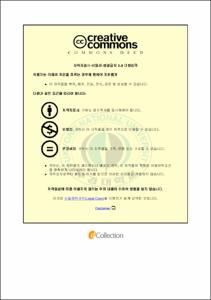굴껍질과 가축뼈를 이용한 납, 구리로 오염된 사격장 오염토양의 안정화
- Abstract
- The soil is one of the important elements in the ecosystem, which the life originates from and lives in. The environment has been dramatically degraded with the accelerated industrialization from the mid 20th century and the soil environment has also been polluted in various channels including the mining and refining activities or military facilities, etc. Although there are over 1,400 shooting ranges where the pollution has been intensified with a lot of copper and lead every year, it is true that surveys or measures on them are lacking. Considering such realities, this study applied the solidification/stabilization engineering methods to the soil directly taken from the shooting ranges of military bases in Busan, and then analyzed their efficiency and mechanism. Although the solidification/stabilization engineering methods are widely used over the world due to their economy and applicability, their actual use in our country is lacking. The highest concentration of both lead and copper in the soil taken from the shooting ranges was 8,106mg/kg and 286mg/kg respectively under 0.1N HCl extraction. This study carried out the experiment by processing the waste oyster shells and livestock bones that have been processed with wastes by the solidification/stabilization agent. The waste oyster shells were filtered with a 10 mesh sieve through a crasher and calcined for two hours at 900℃. As a result of the XRD analysis, main elements in the waste oyster shell before and after calcination were CaCO3 and CaO, while mein elements in the live stock bone were P and Ca from the XRF analysis. The main mechanism to stabilize lead and copper is known to be the physical sealing with the creation of hardening response materials such as CSH and CAH, the formation of precipitation in a very low Ksp value through the molecular bonding or sorption, etc. Although any bonding substance could not be identified in the XRD analysis due to the low detection limit, many crystals, which could be assumed as the precipitation containing heavy metals could be observed through the SEM-EDS analysis. As a result of the experiment, the application of stabilizers using the waste oyster shell showed values compliant to the standard 'A' under the Soil and Environment Preservation Act for both lead and copper from the KST analysis with good results even from the TCLP experiment while demonstrating very good results in stabilizing lead when the waste oyster shells were mixed with the livestock bones in the application.
- Issued Date
- 2010
- Awarded Date
- 2010. 2
- Type
- Dissertation
- Publisher
- 부경대학교
- Department
- 산업대학원 환경공학과
- Advisor
- 김일규
- Table Of Contents
- Abstract
I. 서 론 1
1. 연구배경 1
2. 연구목적 3
II. 이론적 배경 5
1. Solidification/stabilization 공법 5
2. Solidification/stabilization 메커니즘 8
III. 연구방법 11
1. 실험대상토양 11
2. S/S Agents 제작 14
3. 실험방법 19
4. 분석방법 21
IV. 실험결과 및 고찰 24
1. 폐굴껍질 안정화제의 적용결과 24
2. 혼합 안정화제 적용에 따른 효율변화 30
3. TCLP 분석결과 33
4. Sequential Extraction 분석결과 34
5. SEM-EDS, XRD 분석결과 36
V. 결 론 40
- Degree
- Master
- Files in This Item:
-
-
Download
 굴껍질과 가축뼈를 이용한 납, 구리로 오염된 사격장 오염토양의 안정화.pdf
기타 데이터 / 1.67 MB / Adobe PDF
굴껍질과 가축뼈를 이용한 납, 구리로 오염된 사격장 오염토양의 안정화.pdf
기타 데이터 / 1.67 MB / Adobe PDF
-
Items in Repository are protected by copyright, with all rights reserved, unless otherwise indicated.